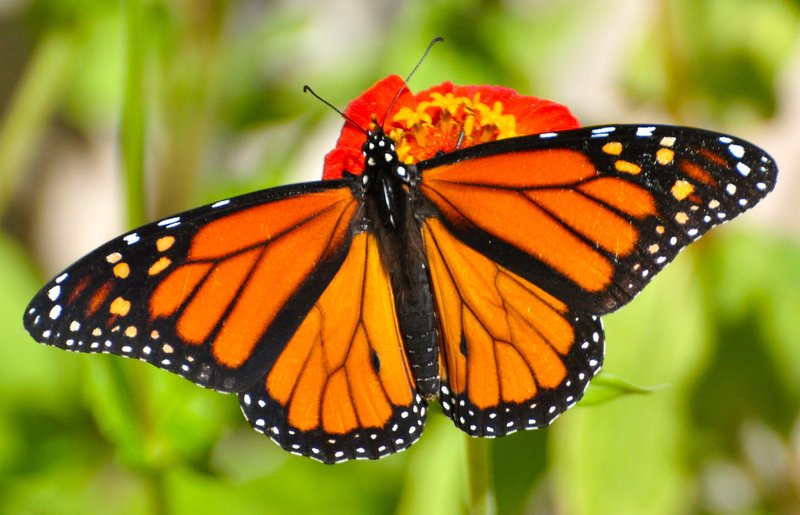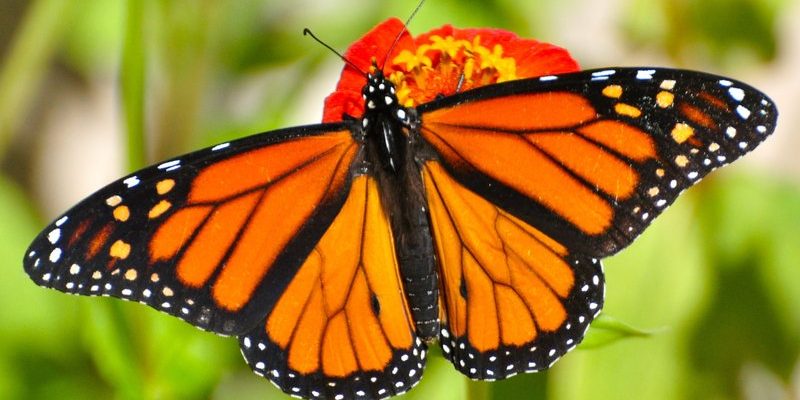
From their incredible migration patterns to their unique life cycle, monarch butterflies have a lot to teach us about resilience and adaptation. Grab your favorite warm drink, and let’s dive deeper into the enchanting world of these butterflies and discover ten amazing facts that will leave you in awe.
1. The Longest Insect Migration
Here’s the thing: monarch butterflies are known for their breathtaking migration. Each year, they travel up to 3,000 miles from North America to central Mexico. That’s like walking from New York to Mexico City! They usually start their journey in late summer, flying south to escape the cold winters.
But how do they find their way? Monarchs are equipped with a built-in compass that helps them navigate. They use the sun’s position and the Earth’s magnetic field to guide them on this epic trek. Imagine being such a small creature and embarking on such a monumental journey! It really puts things into perspective, doesn’t it?
2. The Remarkable Life Cycle
Now, let’s break down the life cycle of a monarch butterfly. It’s one of nature’s finest stories. Monarchs go through four stages: egg, larva (caterpillar), pupa (chrysalis), and adult butterfly.
The female monarch lays tiny eggs on milkweed plants, which are the only food source for the caterpillars once they hatch. After a few days, the caterpillar emerges and starts munching on the leaves. This stage is called the larval stage, and it’s pretty munch-intensive. They eat and grow, shedding their skin multiple times before they enter the pupal stage.
Once they’re ready to transform, they form a chrysalis, where the real magic happens. Inside this protective casing, they completely change. In roughly 10 days, they emerge as beautiful butterflies, ready to take flight. It’s like watching a superhero origin story unfold right in your garden!
3. Vibrant Coloration as a Warning
You might have noticed that monarch butterflies have bright orange wings with black spots. This vibrant coloration serves a critical purpose—it acts as a warning! Monarchs are toxic to predators due to the milkweed they consume in their caterpillar stage.
When a predator like a bird tries to snack on one, it quickly learns that these butterflies aren’t tasty. Instead of something being delicious, they get a mouthful of bitterness. As a result, many birds avoid these colorful butterflies after one bad experience. This is nature’s way of saying, “Don’t mess with me!”
4. The Importance of Milkweed
Speaking of milkweed, these plants are essential for the survival of monarch butterflies. Without milkweed, there would be no monarchs! Unfortunately, this plant is facing threats due to urban development and agricultural practices that clear land.
Conserving milkweed is crucial for monarch conservation. If you want to help these butterflies thrive, consider planting milkweed in your garden. Not only does it attract monarchs, but it also supports other pollinators like bees. It’s like throwing a butterfly party in your backyard!
5. They Can Live for Months
Most butterflies don’t live very long—usually only a few weeks. But monarch butterflies are different. The migratory generation, which makes that long journey to Mexico, can live up to eight months!
This extended lifespan is vital for their survival during migration. They need all those months to make their way down to warmer climates. It’s pretty impressive for a creature so small. Imagine having the endurance to travel that far and still stick around for a while after.
6. A Butterfly with a Built-in GPS
How do they know where to go? Monarchs have a sort of built-in GPS! As I mentioned earlier, they rely on the sun and Earth’s magnetic field for navigation.
But here’s where it gets even cooler: monarchs can sense the polarization of sunlight. This gives them an extra edge when determining direction on cloudy days. It’s like having an internal compass that works no matter the weather!
7. Monarchs Face Many Threats
Despite their resilience, monarch butterflies are in trouble. Their populations have seen serious declines due to habitat loss, climate change, pesticide use, and more. These issues have made it difficult for them to find food and places to breed.
Conservationists are working hard to protect these butterflies, but they need our help too. You can support monarchs by planting their favorite flowers, avoiding pesticides, and spreading awareness about their struggles. It’s all about creating a safer environment for them to thrive.
8. They’re Not Just Beautiful, They’re Cultural Icons
In many cultures, monarch butterflies hold significant symbolism. For instance, in Mexican culture, they are often associated with the spirits of loved ones returning home. The butterflies arrive around the same time as the Day of the Dead celebration, making their migration even more poignant.
This connection runs deeper than just folklore; it highlights the impact of nature on human culture and our appreciation for these beautiful creatures. Isn’t it fascinating how interconnected we all are?
9. Monarch Butterflies in Captivity
While it’s best to see monarchs in the wild, they can also be raised in captivity. Butterfly enthusiasts often rear them at home, providing a safe environment to observe their life cycle.
If you’re interested in trying this, it’s essential to create a suitable habitat. You’ll need to provide milkweed for the caterpillars and ensure they have enough space to fly as adults. It’s a rewarding experience that offers a firsthand look at nature’s wonders.
10. The Future of Monarch Butterflies
The future of monarch butterflies depends on our concerted efforts to protect them. By supporting conservation initiatives, planting native plants, and educating others, we can all contribute to saving these incredible insects.
Remember that every small action counts. Whether it’s planting a few flowers or spreading awareness, you can make a difference. Monarchs may be tiny, but their impact on our ecosystem and culture is monumental.
In conclusion, monarch butterflies are not just beautiful insects; they are symbols of resilience, migration, and the interconnectedness of life. By learning about them and taking action to protect their habitats, we can ensure that future generations enjoy the sight of these magnificent butterflies fluttering through our gardens. So next time you see a monarch, take a moment to appreciate the incredible journey it represents.

